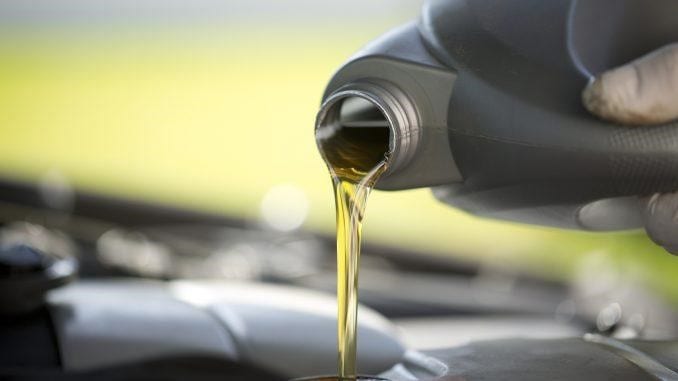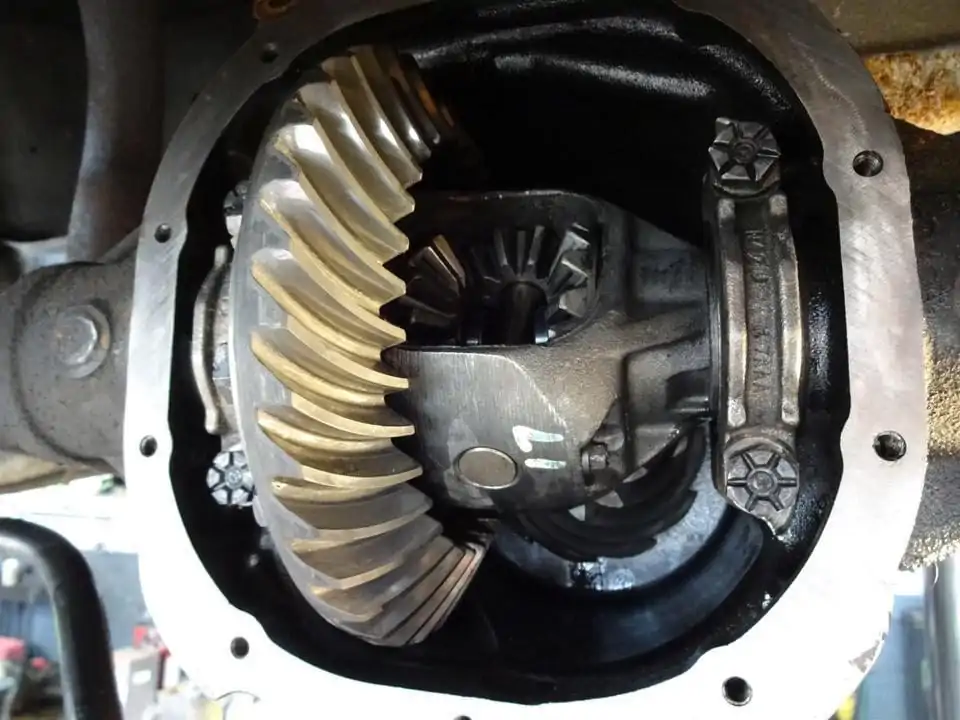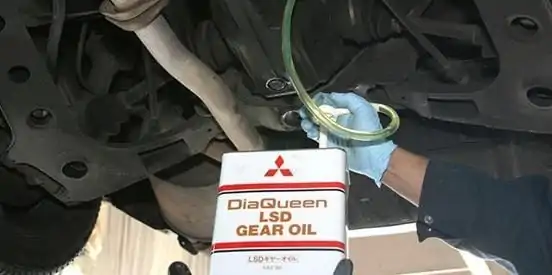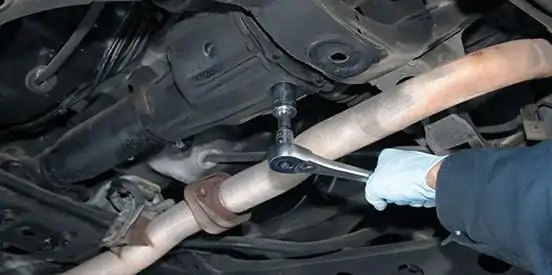
Which oil to choose for differential?
Content
Which oil to choose for differential?
Differential is a very important element of the vehicle, the task of which is to perform not one, but three important functions:
- transmit torque from the engine to the drive wheels
- set wheels at different angular speeds
- serve as a gearbox in combination with the final drive
In other words, due to the correct operation of the differential elements, the wheels of the car can rotate at different speeds when cornering, thus ensuring stability and safety during the movement of the car.
Since it consists of metal parts of various shapes, such as gears and others, it needs constant lubrication of these parts to ensure their proper functioning and to prevent damage. This crucial task is assigned to the differential oil.

What is differential oil?
Differential or regenerative oil is a type of oil specially designed for high pressure applications. It differs from engine oil in density and viscosity. (Differential oil is much thicker and has a higher viscosity than engine oil.)
classification:
The American Petroleum Institute (API) classifies differential oils in the range from GL-1 to GL-6, with each rating associated with specific types of gearboxes and operating conditions:
GL-1, for example, is the basic type of gear oil that has been developed for certain types of differential settings and for lighter operating modes.
GL-6 is designed to work in very harsh environments
Which differential oil to choose?
There are a few basic things to consider when choosing a differential oil:
- viscosity
- API Rating
- Criterion according to the ANSI / AGMA standard
- Additive type
Viscosity
One of the important properties that a high-quality differential oil should have. Viscosity is usually referred to in the car manual. If this is not possible, you can find information about a particular model and make of car online or contact a service center or a specialized store selling oils.
API Rating
We already mentioned that this rating is related to the type of differential and operating conditions. Which appropriate rating is also described in the car manual.
ANSI / AGMA standard
It includes methods that define criteria such as load, speed, temperature, etc. etc. We assume that it is already clear that these parameters can also be found in the car’s manual.
Additives
Supplements that may be contained in a differential fluid are mainly 3 categories:
- R&O - Anti-rust and anti-oxidation additives that provide corrosion protection and chemical resistance
- Antiscuff - additives that create a stronger film on the elements of the differential
- Complex additives - this type of additive provides increased lubrication and an even better protective film
Basic differential oil, like engine oil, is divided into mineral or synthetic:
Mineral-based oils usually have a higher viscosity than synthetic oils and have more uses.
Synthetic oils, in turn, are more resistant to oxidation and thermal decomposition, which makes them the best choice for use at high operating temperatures.
From all that has been said, it became clear that choosing the right differential for oil is not easy, so the advice when buying oil is to follow the recommendations of the manufacturers or seek the advice of a mechanic or a seller of differentials. oils.
Why is it necessary to replace the differential oil at regular intervals?
Changing gear oil is just as important as replacing a car’s engine oil, and the reason for such a regular change is that over time, the oil becomes contaminated, compressed and gradually loses its properties.

How often does the gearbox oil change?
Differential fluid is usually much more durable than other types of automotive oils, and this is good news. However, this does not mean that its replacement should be neglected (as is often the case).
Replacement periods depend on both the driving style and the recommendations of the manufacturers of a particular car model and brand. Nevertheless, it can be said that the differential oil is good to change with a range of 30 to 60000 km.
If, after the recommended mileage has been passed, and the fluid has not been replaced, the differential elements begin to emit unpleasant noises, and after a while the gears begin to self-destruct.
How to replace the differential oil?
Changing the oil is not a difficult task, but there is a slight inconvenience... The gear oil itself smells awful (somewhere between the smell of sulfur and rotten eggs). This "smell" is not pleasant at all, and if the change is made at home, it should be carried out outdoors or in very well ventilated areas.
The fluid can be replaced in the workshop or at home. It is advisable to leave the service shift, on the one hand, in order to “protect” yourself from the terrible smell, and on the other hand, to be sure that the work will be completed quickly, without failures and without problems. However, if you are the type of enthusiast who prefers to do this on their own, here is how you can make changes at home.
Assistance with resumes writing
Prepare the necessary tools, new fill oil and a suitable place where you will change
The tools you will need to change the oil are undoubtedly available in your home workshop. Usually with a set of rattles, a few wrenches and a suitable tray for collecting old oil
You will find out which differential oil you will need from the vehicle maintenance manual. If you did not find it, you can contact one of the specialized stores or repair shops where they will help you make the right choice.
The choice of location is also very important, so it’s good to choose a flat area on the street or a room with very good ventilation (we already mentioned why).

Oil change step by step:
- Drive the car and make a few “circles” in the vicinity to slightly heat the oil. (When the oil warms up, it will drain much faster)
- Park your vehicle on a level surface and apply the parking brake.
- Lift the car on a jack or a lifting device for your convenience
- Prepare the work area. Carefully inspect the differential and read the manual for the car, as depending on the design of the differential, it may have a plug for draining the oil, but you may need to open the hood
- Before starting work, place a tray or other suitable container under the cork so that oil can accumulate in the container and not spill anywhere on the floor.
- Find where the filler hole is and loosen the lid slightly (usually this lid is on the top of the housing lid).
- Locate and unscrew the drain plug and let the oil drain completely.

Wipe well with a clean cloth to remove excess oil. Make sure you wipe everything thoroughly. Then remove the filler cap and pour in new differential oil. Use high quality gear oil and always follow the manufacturer's instructions. Filling new oil is quick and easy with the pump, so be sure to prepare it when preparing tools for changing the oil.
Start by adding new oil. To find out how much oil you need, follow the markings on the cover and when you reach the maximum line stop. If you do not find such a mark, add fluid until it begins to come out of the filling hole.
Screw the cap back on, clean the area well and remove the machine from the jack.
Watch for leaks in the coming days.
Questions and answers:
What kind of oil to fill in the differential? For the rear axle in modern gearboxes (the differential of the rear axle is also located there), gear oil of the API GL-5 class is used. The viscosity for a particular model is determined by the automaker itself.
What is differential oil? It is a transmission oil capable of maintaining an oil film on heavily loaded parts and having a suitable viscosity.
What kind of oil to pour into the limited slip differential? For limited slip differentials and disc locking devices, it is necessary to purchase special oils (they have their own class of viscosity and lubricating characteristics).
